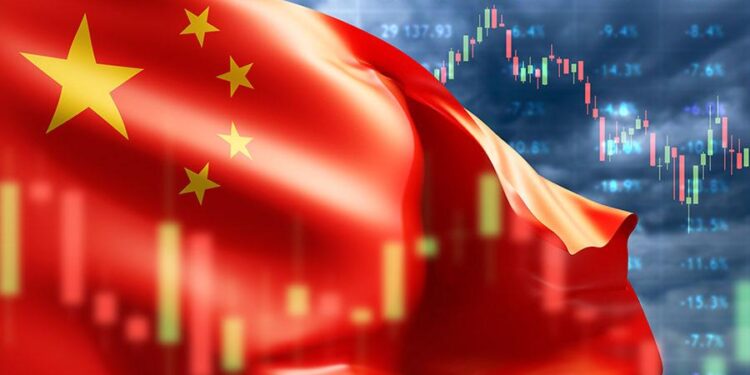China’s factory output and retail sales growth have both slowed significantly, signaling a potential setback for the world’s second-largest economy. According to recent data reported by Reuters, the disappointing figures highlight mounting challenges as the country grapples with weakening domestic demand and ongoing global uncertainties. Economists warn that this slump could undermine China’s broader economic recovery efforts, raising concerns about the pace of growth in the coming months.
China’s Factory Output Decline Signals Slowing Industrial Momentum
Industrial activity in China showed a marked slowdown, with factory output shrinking more than expected amid weakening domestic and international demand. Key manufacturing hubs reported lower production volumes, exacerbating concerns over the resilience of the country’s industrial engine. This dip in manufacturing comes at a time when policymakers are grappling with external headwinds such as faltering global trade and ongoing supply chain disruptions.
Retail sales growth also slowed, signaling diminished consumer confidence and tighter spending patterns. Analysts highlight several contributing factors:
- Reduced export orders linked to global economic uncertainty
- Softening domestic consumption and cautious household sentiment
- Ongoing impact of intermittent COVID-19 restrictions on supply and workforce availability
The combination of contracting factory output and sluggish retail demand underscores mounting pressures on China’s economic recovery trajectory as it navigates a complex global environment.
| Indicator | Previous Month (%) | Current Month (%) |
|---|---|---|
| Factory Output Growth | 1.2 | -0.5 |
| Retail Sales Growth | 3.5 | 1.1 |
| Industrial Production | 0.9 | 0.0 |
Retail Sales Growth Falters Amid Consumer Caution and Market Uncertainty
Recent data highlights a marked slowdown in retail sales, reflecting growing consumer caution amid a climate of economic uncertainty. After a brief period of recovery, shoppers have become more hesitant, driven by concerns over inflationary pressures and volatile market conditions. Analysts warn that this hesitation could weigh heavily on domestic demand, threatening to stifle growth in key sectors such as electronics, apparel, and home goods.
The shift in consumer behavior is further complicated by fluctuating employment numbers and tighter credit conditions, which are undermining confidence. Key factors impacting retail growth include:
- Rising prices: Consumers face increasing costs for everyday items, leading to more selective spending.
- Global uncertainties: Trade tensions and geopolitical risks continue to cloud economic outlooks.
- Supply chain disruptions: Persistent logistical challenges are causing product shortages and delays.
| Sector | Sales Growth Q1 (YoY) | Current Status |
|---|---|---|
| Electronics | 1.2% | Declining demand |
| Apparel | 0.7% | Slow recovery |
| Home Goods | 0.4% | Unstable sales |
Experts Recommend Targeted Stimulus and Policy Support to Bolster Economic Recovery
In light of the recent downturn in industrial and consumer activity, specialists urge authorities to implement precisely targeted fiscal measures to revive momentum. Instead of broad-spectrum stimulus, experts emphasize the importance of directing funds towards sectors exhibiting potential for rapid recovery, such as technology manufacturing and sustainable energy. Furthermore, policymakers are advised to support consumer confidence by enhancing social safety nets and promoting digital payment systems to spur retail spending.
Strategic interventions could include:
- Tax incentives for small and medium-sized enterprises (SMEs) facing liquidity challenges
- Expansion of infrastructure investments in emerging industries
- Temporary subsidies to alleviate supply chain bottlenecks
- Targeted employment programs focusing on retraining workers from affected sectors
| Measure | Expected Impact | Timeline |
|---|---|---|
| SME Tax Credits | Boost liquidity and investment | Short-term (3-6 months) |
| Infrastructure Spending | Long-term job creation | Medium-term (6-18 months) |
| Supply Chain Subsidies | Reduce production delays | Immediate (1-3 months) |
| Employment Retraining | Enhance workforce adaptability | Ongoing |
Insights and Conclusions
As China’s factory output and retail sales growth continue to slow, the latest data underscores mounting challenges for the world’s second-largest economy. Policymakers will face increased pressure to implement measures aimed at stabilizing growth and bolstering domestic consumption. Economists and investors alike will be closely watching upcoming economic indicators for signs of recovery or further weakening, as China navigates a critical juncture amid both internal and external uncertainties.































